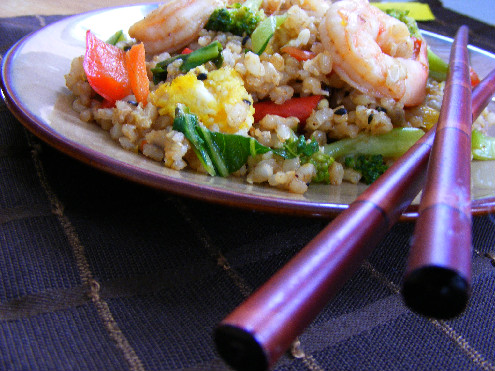Coconut Milk: Brazilian Fish Stew – Moqueca de Peixe
Sunday, March 27th, 2011
Although I have yet to visit Brazil, I am enamored with its culture, food and drink. Brazilian cookery has a unique Latin American flavor, influenced by the country’s inhabitants – Native Indians, Africans, and Portuguese.
In this dish – moqueca de peixe, Brazilian fish stew – the African influence dominantes.
From region to region, there are various versions of moqueca de peixe. The Bahian version, which includes coconut milk and palm oil, is generally considered “the” favorite.
The state of Bahia sits in the northeastern part of Brazil. It is also home to the Coconut Coast, 120 miles of coconut groves, and is the largest producer of coconuts in the country. Today, more than 75% of Bahia’s inhabitants are of African descent, reflecting its historical past. During 16th century colonization of Brazil, the Portuguese used the region as an entry point, bringing with them vast numbers of African slaves to work the sugar plantations.
Malagueta chile peppers and dende oil were ingredients introduced into the region by Africans. Both, are used to make moqueca de peixe.
Malagueta chiles are on the hotter end of the spectrum and can be substituted with serrano chiles, which are more readily available in the United States. Dende oil, also known as palm oil, is less readily available but can be located in Brazilian or Latin American markets. Although you won’t find a traditional version of moqueca de peixe in Bahia without dende oil, in our house we make it without it frequently.
This fish stew is actually lighter than you’d think but it’s loaded with flavor. Although it has coconut milk, lime and a fish/sea food-base, it does not taste similar to Asian curries.
Give it a try and add it to your repertoire of coconut milk dishes. Most Brazilians eat moqueca de peixe with a side of rice and some farofa, seasoned toasted manioc flour.
Bom apetite!
While you cook up this dish, check out the tunes and bio of one of Brazil’s famous singers Jorge Ben Jor on Afropop Worldwide.







